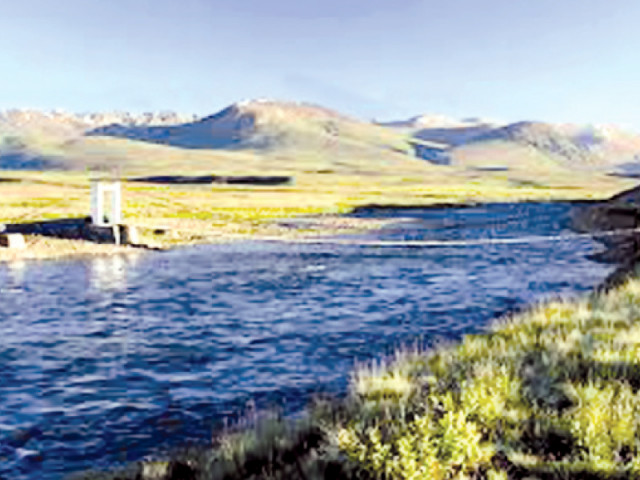Climate change: Up above in Karakorams, odd weather may be playing tricks
Policy brief highlights need for science-based remedial measures; water in parts of G-B unsafe.

A view of the Deosai plains which is a part of the Karakoram Range. PHOTO: WAQAS NAEEM/GOOGLE
Spread over around 10,000 square kilometres, the Central Karakoram National Park (CKNP) in Gilgit-Baltistan (G-B) is home to the largest glacial land mass in the world outside the polar region.
Thirty-eight per cent of the park’s land mass is covered with glaciers, which provide freshwater to the park,
local communities and much of the rest of Pakistan via the Indus River.
But climate change is beginning to adversely impact the mountain ecosystem of the park.
“The severe impact of climate change is being experienced in the form of floods, droughts, higher average temperatures and changes in precipitation, and all these are projected to affect the availability of water resources in the CKNP area,” said Daniela Giardina, a scientific coordinator for the Socio Economic Environmental Development (SEED) project in CKNP. “These factors are also expected to cause faster deterioration of water quality.”
Giardina was speaking at the launch of a SEED water management policy brief in Islamabad on Friday, which aims to highlight water issues in the CKNP and spell out research-based remedies.

The brief recommends that the communications gap between scientists and policymakers must be bridged for better water management. It also suggests raising awareness on water quality, water protection and hygiene among local communities. Finally, the policy brief states that the risk of water pollution should be reduced through water safety plans at the communal level.
Project Director Raffaele Del Cima said SEED intends to improve the quality of life of 230 village communities living on the park’s outskirts by diversifying their livelihood options.
At the same time, the project is helping in the development of a sustainable park management protocol and conducting scientific research about the park’s natural resource, Cima said. A water laboratory has been been set up and a team of Italian researchers have tested water quality in the area.
Their analysis of 19 samples from the different locations showed that water in the villages, especially in the Karimabad area of Hunza, is contaminated and contains elevated levels of E Coli and other forms of bacteria.
On the other hand, water in the central part of the CKNP was found to be safe for drinking. The experts believe that the presence of animals near water bodies in the villages and lack of wastewater treatment is degrading the water quality.
Water quality is crucial to the health of G-B residents, especially given that G-B’s infant mortality rate is higher than the rest of Pakistan, according to an Asian Development Bank survey from 2011.

Giardina explained that, as part of the project, glaciologists are compiling an inventory of the glaciers in the area, hydrologists are looking to answer questions about water availability and researchers are testing the water for contamination.
“We do believe that through applying scientific research, we can provide policymakers with the knowledge needed to make important decisions and promote better governance of natural resources,” she said.
Karakoram International University (KIU) doctoral students are contributing to the research as well, KIU Vice Chancellor Najma Najam said. The university’s students are working on at least 48 projects focused on the CKNP region, Najam said.
Chief Guest Javed Malik, the food and agriculture member at the Planning Commission, said awareness is critical for environment conservation and climate change mitigation.
Published in The Express Tribune, April 27th, 2013.



















COMMENTS
Comments are moderated and generally will be posted if they are on-topic and not abusive.
For more information, please see our Comments FAQ